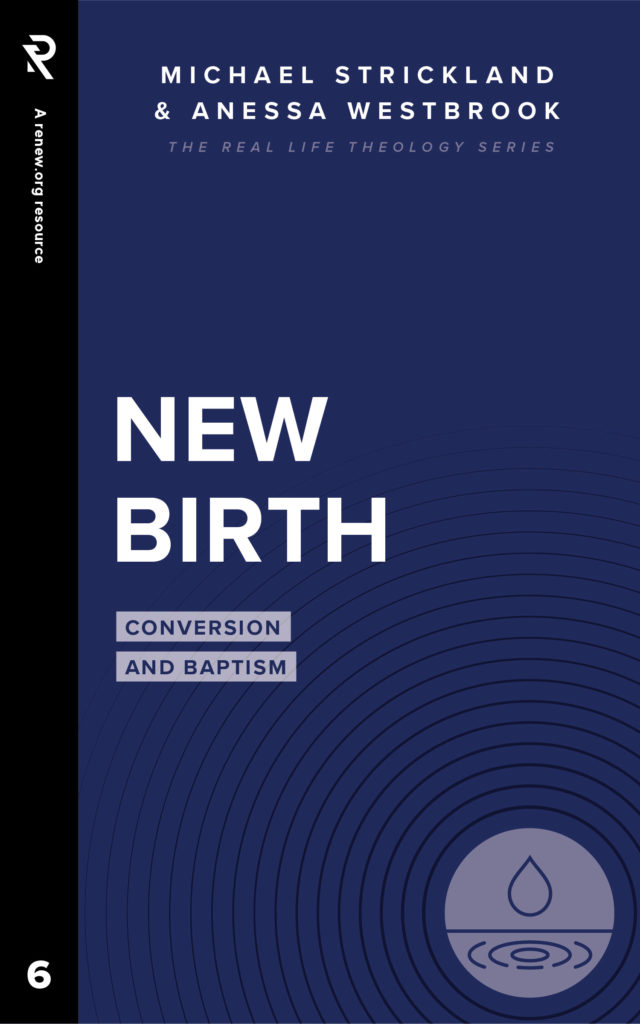
Jesus’ Baptism: What It Did and Why It Matters
What was the point of Jesus’ baptism? Of all the baptisms John the Baptist did, the one that most confused him was when the Messiah himself came to be baptized. Jesus’ explanation was that he needed John to baptize him in order to fulfill righteousness. But how would Jesus’ baptism do that? And what significance does Jesus’ baptism have for our lives today?
Let’s explore this fascinating event in the Gospels.
What Was Jesus’ Baptism Like?
One big clue that we should see Jesus’ baptism as important is that all four Gospels narrate it: Matthew 3:13-17; Mark 1:9-11; Luke 3:21-23a; and John 1:32-34. Here are the four accounts of what happened:
Then Jesus came from Galilee to the Jordan to be baptized by John. But John tried to deter him, saying, “I need to be baptized by you, and do you come to me?” Jesus replied, “Let it be so now; it is proper for us to do this to fulfill all righteousness.” Then John consented. As soon as Jesus was baptized, he went up out of the water. At that moment heaven was opened, and he saw the Spirit of God descending like a dove and alighting on him. And a voice from heaven said, “This is my Son, whom I love; with him I am well pleased.” (Matt. 3:13-17, NIV)
Jesus’ baptism: “This is my Son, whom I love; with him I am well pleased.”
At that time Jesus came from Nazareth in Galilee and was baptized by John in the Jordan. Just as Jesus was coming up out of the water, he saw heaven being torn open and the Spirit descending on him like a dove. And a voice came from heaven: “You are my Son, whom I love; with you I am well pleased.” (Mark 1:9-11, NIV)
When all the people were being baptized, Jesus was baptized too. And as he was praying, heaven was opened and the Holy Spirit descended on him in bodily form like a dove. And a voice came from heaven: “You are my Son, whom I love; with you I am well pleased.” Now Jesus himself was about thirty years old when he began his ministry. (Luke 3:21-23a, NIV)
Then John gave this testimony: “I saw the Spirit come down from heaven as a dove and remain on him. And I myself did not know him, but the one who sent me to baptize with water told me, ‘The man on whom you see the Spirit come down and remain is the one who will baptize with the Holy Spirit.’ I have seen and I testify that this is God’s Chosen One.” (John 1:32-34, NIV)
Jesus’ baptism: “I saw the Spirit come down from heaven as a dove and remain on him.”
So, what was Jesus’ baptism like? Here are some of the major details:
- Who: John the Baptist and Jesus
- What: Jesus’ baptism, followed by the Spirit descending and a voice from heaven
- When: when others were being baptized by John, when Jesus was about thirty years old
- Where: at Bethany, on the “other side of the Jordan” (i.e., east of the Jordan)
- Why: to “fulfill all righteousness”
Since the Gospel writers were teaching about Jesus’ life for their particular audiences, we can expect to see different shades of emphasis. Below, we’ll take a closer look at Matthew’s account, the longest account, in order to explore how Jesus’ baptism “fulfilled all righteousness.”
What Role Did Jesus’ Baptism Play in His Ministry?
Although Jesus’ baptism is narrated in all four Gospels, it’s actually the book of Acts that explains most clearly the part that his baptism played in his ministry. Check out the following two passages from Acts and see if you can discover how Jesus’ baptism fits into his larger ministry:
Here is Peter explaining to the rest of Jesus’ apostles why they need to prayerfully pick a replacement for the fallen apostle Judas Iscariot:
“Therefore it is necessary to choose one of the men who have been with us the whole time the Lord Jesus was living among us, beginning from John’s baptism to the time when Jesus was taken up from us. For one of these must become a witness with us of his resurrection.” (Acts 1:21-22, NIV)
Here again is Peter, giving a quick summary of Jesus’ ministry to the first Gentile convert (Cornelius):
“You know what has happened throughout the province of Judea, beginning in Galilee after the baptism that John preached—how God anointed Jesus of Nazareth with the Holy Spirit and power, and how he went around doing good and healing all who were under the power of the devil, because God was with him. We are witnesses of everything he did in the country of the Jews and in Jerusalem. They killed him by hanging him on a cross, but God raised him from the dead on the third day and caused him to be seen.” (Acts 10:37-40, NIV)
“You know what has happened throughout the province of Judea, beginning in Galilee after the baptism that John preached.”
So, what role did Jesus’ baptism play in his ministry? From these passages, it seems clear that Jesus’ baptism was the first bookend to his ministry (with either his resurrection or his ascension being the other major bookend). According to these excerpts from Acts, Jesus’ ministry began at his baptism. This event is huge. It all begins here.
Why Did Jesus Need to Get Baptized?
There are many people who are skeptical of the stories of the New Testament. I’m not one of them (and I give some reasons here). I’ll add that the story of Jesus’ baptism is one of many, many stories in the Gospels which make sense to be included in the Gospels only if they had really happened. It would be really strange for the Gospel writers to fabricate a story of Jesus getting baptized when both John’s baptism (e.g., Matt. 3:11) and Christian baptism (e.g., Matt. 28:19) were so heavily associated with repenting of sins—an association no New Testament writer would want to paint on Jesus.
The best answer we can land on as to why Jesus felt the need to get baptized is to accept Jesus’ own answer to this question. It’s kind of nice when a question we’re all thinking gets asked in the text itself. Since John the Baptist baptized people who needed to repent—and since John couldn’t understand why Jesus would come to him to repent of anything—John asked him a very sensible question: “I need to be baptized by you, and do you come to me?”
Jesus’ baptism: “I need to be baptized by you, and do you come to me?”
Here’s Jesus’ answer (which we’ll explore in the next section): “Let it be so now; it is proper for us to do this to fulfill all righteousness” (Matt. 3:14-15, NIV).
How Did Jesus’ Baptism “Fulfill All Righteousness”?
For context, let’s trace Jesus’ bio so far in the Gospel of Matthew:
- Matthew 1 – Born in the promised land (Bethlehem)
- Matthew 2 – Escaped to Egypt
- Matthew 2 – Returned to the promised land (Nazareth)
- Matthew 3 – Goes to the Jordan River to be baptized in it
- Matthew 4 – Led into the wilderness for forty days/forty nights
- Matthew 5-7 – Goes up onto a mountain to give new commandments (the Sermon on the Mount)
Now, for even wider context, let’s trace the major steps of the ancient nation of Israel up until Joshua led them as conquerors into the promised land. See if you can notice some parallels with Jesus in Matthew 1-7:
- God leads Abraham to a land he promises to give Abraham’s descendants. His son Isaac, his grandson Jacob, and Jacob’s sons all live in the promised land as sojourners.
- Jacob’s son Joseph is treacherously sold into slavery in Egypt; in an ironic, redemptive twist, because of Joseph’s rising status in Egypt, the Israelites are able to take refuge in Egypt to escape a famine.
- After they become enslaved for many years, Moses leads the Israelite people back out of Egypt through the parted Red Sea in order to escape the Egyptian army.
- Moses goes up onto a mountain in order to receive God’s commandments and give them to the people.
- Instead of entering the promised land, the Israelites wander in the wilderness, being tested for 40 years.
- Joshua leads the people into the promised land by crossing through the parted Jordan River. According to Joshua 3, the priests carry the ark, coming to the brink of the Jordan. When they hit the water, the Jordan stops flowing, and they walk through on dry ground. Meanwhile, twelve men take stones from the riverbed and set up a monument on the other side. They go into the new land and have their new beginning.
“Joshua leads the people into the promised land by crossing through the parted Jordan River.”
Did you notice any parallels between Jesus in the first chapters of Matthew’s Gospel and ancient Israel in the opening books of the Old Testament?
Interestingly, “Joshua” when translated into Greek is Iesous, and Iesous is what we translate into English as “Jesus.” Put another way, Iesous (Jesus) is the New Testament (Greek) equivalent to Yeshua (Joshua) in the Old Testament (Hebrew). And just as Jesus goes up on a mountain to give new commandments, in the likeness of Moses on Mount Sinai, so Jesus also leads his people into the fullness of God’s promises, in the likeness of Joshua who led his people into the promised land.
So, back to our question: Why is Jesus getting baptized when he has nothing to repent of?
The answer seems to be this: Jesus is acting on behalf of the nation. As my former professor Mark Moore explained from his studies in the Gospels, Jesus is Israel as it should have been. Although the Israelites had broken the old covenant, Jesus came as Messiah to inaugurate the new covenant for his people (Jer. 31:31-34). Part of the process of inaugurating the new covenant was retracing the steps of Israel, but in a way that fulfilled the righteousness Israel had failed to fulfill.
And when you’re the head of the nation, your sin and your righteousness influence the entire nation. We find examples of Daniel, Nehemiah, Moses, and Jeremiah praying and repenting on behalf of their people. Similarly, Jesus is the personification of Israel—except he’s doing it right. His nation clearly needed to repent, and, along with the rest of the ways Jesus was retracing the steps of Israel, it was as if he was repenting on their behalf.
“Jesus is the personification of Israel—except he’s doing it right.”
Three quotes by New Testament scholars have been especially helpful for me as I’ve tried to process what Jesus was doing here. Craig Keener describes this as “identification with Israel in obedience to God’s law.”[1] Leon Morris explains, “He was down there with the sinners, affirming his solidarity with them, making himself one with them in the process of the salvation that he would in due course accomplish.”[2] Finally, John Nolland sees in Jesus’ baptism “a commitment to be himself first what he will call others to be.”[3]
So, how does Jesus’ baptism “fulfill all righteousness”? It is through his baptism—just as with his escape to Egypt, his forty days in the wilderness, etc.—that he identifies with the nation of Israel and paves the way of righteousness for those coming after. His baptism was another way of retracing Israel’s steps the right way and so paving the path of righteousness for his disciples.
What Does John’s Confusion Tell Us?
It’s significant that John balked at baptizing Jesus. This tells us that John didn’t believe Jesus needed it. This hesitation hints at a theme we see regarding Jesus throughout the New Testament: that Jesus was without sin. And Jesus doesn’t correct this assessment. Because he himself was without sin, Jesus was able to righteously retrace the steps of his people.
And, in addition to this fulfillment of righteousness, there’s something even more fundamental going on here at his baptism. What is it? One clue is found in the word “now” in Matthew 3:15: “Jesus replied, ‘Let it be so now; it is proper for us to do this to fulfill all righteousness’” (NIV). Jesus’ baptism was a handoff, a passing of the baton, from John to Jesus. Even more, it was the start of an era.
What Change Took Place at Jesus’ Baptism?
The moment Jesus emerged from the water (Matt. 3:16), two fascinating events happened. Luke tells us that they occurred “as he was praying” (Luke 3:21, NIV). First, the heavens were torn open and the Holy Spirit descended visibly on Jesus (in the likeness of a dove/pigeon). Second, a voice from heaven said, “This is my Son, whom I love; with him I am well pleased” (Matt. 3:17, NIV).
“Heavens” (Gk. ouranos) is a word which can refer to more physically to the skies or more transcendentally to the abode of God. Interestingly, this “tearing apart” of the heavens is the same word for the tearing of the veil at Jesus’ death (e.g., Matt. 27:51; Mark 15:38; Luke 23:45).
When the heavens split, the Holy Spirit descended on Jesus, and it was now that he was ready to officially begin his ministry. In fact, the next event narrated in Matthew, Mark, and Luke (the “Synoptic Gospels”) is the Spirit leading Jesus into the wilderness for forty days to be tested. This anointing by the Holy Spirit for ministry is the fundamental change that took place at Jesus’ baptism. As Acts 10:38 puts it, “God anointed Jesus of Nazareth with the Holy Spirit and power, and . . . he went around doing good and healing . . .” (NIV).
“This anointing by the Holy Spirit for ministry is the fundamental change that took place at Jesus’ baptism.”
Speaking of Jesus and the Spirit and the voice from heaven, it’s definitely worth mentioning that this is one of the places in the New Testament in which we see all three members of the Godhead in the same passage. Here, we see the three-in-one unity known as the Trinity all at once. As God the Son is being baptized, God the Spirit descends and rests upon him and God the Father speaks of how much he loves his Son.
How Is Jesus’ Baptism Like Our Own?
Our baptism is a reenactment of Jesus’ death, burial, and resurrection. As Romans 6:4 says, “We were therefore buried with him through baptism into death in order that, just as Christ was raised from the dead through the glory of the Father, we too may live a new life” (NIV). Even still, there’s at least one huge difference between our baptism and Jesus’ baptism: Acts 2:38 says that we are baptized in the name of Jesus Christ “for the forgiveness of your sins.” As the sinless God-man who represents God to humans and humans to God, Jesus himself had no sins that needed forgiven. As such, he was able to be our sacrificial lamb “without defect or blemish” (e.g., Lev. 22:21).
At the same time, there are a couple fascinating ways in which our baptism does mirror Jesus’ somewhat. First, Acts 2:38 says that, at baptism, we receive the Holy Spirit: “Repent and be baptized, every one of you, in the name of Jesus Christ for the forgiveness of your sins. And you will receive the gift of the Holy Spirit” (NIV). There’s some similarity here with Jesus’ baptism, for it was at his baptism that the Spirit descended and began empowering him for ministry.
“There are a couple fascinating ways in which our baptism does mirror Jesus’.”
Second, there’s a similarity between what God the Father said to Jesus at his baptism and how he feels about us at ours.
As we are forgiven of our sins and receive the gift of the Holy Spirit, we are brought into God’s family—adopted as his beloved children. Such an adoption is far, far grander than we could ever earn. Jesus is God’s Son by virtue of his eternal identity, whereas we are sinners adopted into his family only by grace through faith. That’s some seriously amazing grace!
Yet, even though there are major differences between Jesus’ eternal status as God’s Son and our received status as God’s adopted children, we can still imagine our Father in heaven having a feeling for us that is similar to what he said over his Son at his baptism. Because “Jesus is not ashamed to call [us] brothers and sisters” (Heb. 2:11, NIV), we can totally imagine God at our baptism saying over us, This too is my son, whom I love; with him I am well pleased. This too is my daughter, whom I love; with her I am well pleased. And there is no sentiment that could ever be felt about us or expressed toward us that could ever match the blessedness of being God’s child with whom he is well pleased.
[1] Craig Keener, The IVP Bible Background Commentary (Downers Grove: InterVarsity, 1993), 53.
[2] Leon Morris, The Gospel According to Matthew, Pillar New Testament Commentary. Accordance electronic ed. (Grand Rapids: Eerdmans, 1992), 65.
[3] John Nolland, The Gospel of Matthew: A Commentary on the Greek Text, New International Greek Testament Commentary. Accordance electronic ed. (Grand Rapids: Eerdmans, 2005), 154.









